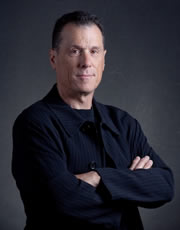 Where does an idea come from? How do we know if it is an idea worth pursuing? And, why do some ideas get “traction”, while others do not? Throughout the history of art we find artists inventing novel ways to circumvent their id (and ego as well) so as to allow ideas to gestate; to give an idea enough time before dismissing it, to actually make its own case for existence. We see such strategies in the work, for instance, of composer John Cage. Cage was well known for his use of chance and indeterminacy in the process of making experimental music of art, noting that, “In the nature of the use of chance operations is the belief that all answers answer all questions.”
Where does an idea come from? How do we know if it is an idea worth pursuing? And, why do some ideas get “traction”, while others do not? Throughout the history of art we find artists inventing novel ways to circumvent their id (and ego as well) so as to allow ideas to gestate; to give an idea enough time before dismissing it, to actually make its own case for existence. We see such strategies in the work, for instance, of composer John Cage. Cage was well known for his use of chance and indeterminacy in the process of making experimental music of art, noting that, “In the nature of the use of chance operations is the belief that all answers answer all questions.”
While Cage used chance procedures to answer generally binary questions in his process, he did so within a rigorously structured environment, often beginning with inspirations like Thoreau and James Joyce. Cage took these literary texts and transformed them into music but avoided aesthetic decisions by employing such devices as the I Ching (Book of Changes) or rolling dice to solve a number of questions within the work itself.
Many of Cage’s ideas about what music could be were inspired by the artist Marcel Duchamp, who pushed against the prevailing notions of art in the twentieth century by presenting everyday, mass produced objects in museum settings as finished works of art, which he called, ready-mades. Like Duchamp, Cage found music framed music as a pre-existing condition around in need of a framing device.
In an essay in the New Yorker called, Slow Ideas, author Atul Gawande notes that:
In our era of electronic communications, we’ve come to expect that important innovations will spread quickly. Plenty do: think of in-vitro fertilization, genomics, and communications technologies themselves. But there’s an equally long list of vital innovations that have failed to catch on.
Perhaps what we can learn from John Cage and others whose work takes time to gestate and evolve, is patience. It sometimes just takes the time it takes. Our job is to be available to the idea when it presents itself; then let the work begin.
Douglas Rosenberg
Chair, Art Department
